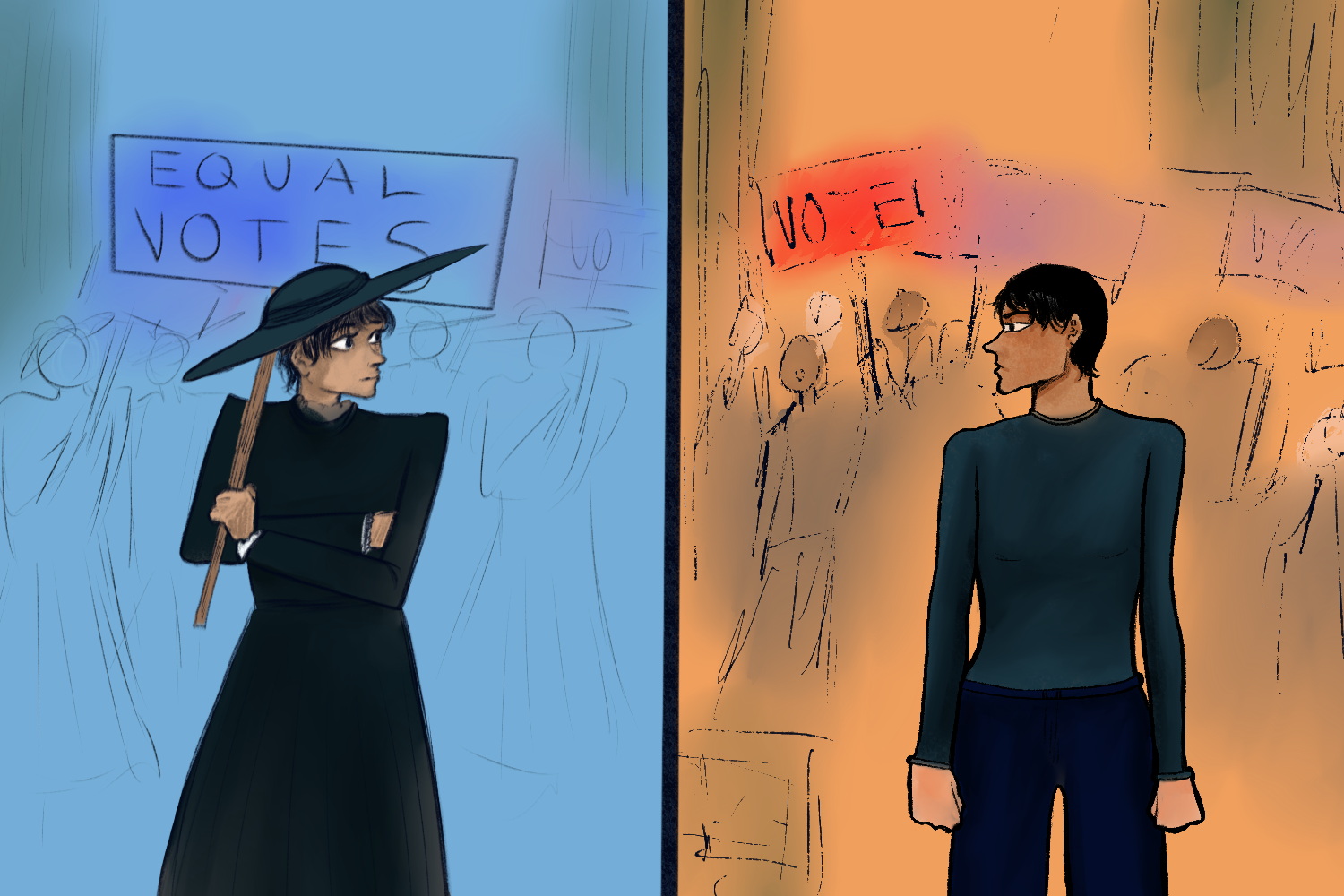
Voting has existed as a constant celebration of American identity and unity since the formation of the United States. From early to current-day voting, the freedom of choice has been an essential factor in the American experience.
“The idea that people have a say in their government here in the U.S. is baked into American identity,” said Jarrod Harrison, a history teacher at Carlmont High School.
Voting came from across the sea into America. When colonists landed in North America and established towns and settlements, self-government and voting in many of these townships were commonplace. As many towns were isolated from more official governing powers like the king, representative government was more commonplace to run things in the Americas.
“If you look at American history from 1775 to 2024 or the British system from 1688 to the present, both voting institutions are codified by gradualism,” said Jayson Waller, a history teacher at Carlmont High School.
Voting became a tradition in the colonies, often knitting together communities. Voting methods, such as majority count, were a common way to make decisions regarding town problems and leaders. As voting continued to evolve, and even in this ordinary time, restrictions for voting based on sex, property ownership, and religion were prevalent and restricted suffrage for many individuals in the colonies.
“In those days, there were no secret ballots, so everyone knew how everyone voted. The parties could reward supporters with perks like jobs, money, and groceries for the urban working poor people,” Harrison said.
As time passed, the United States became independent, and voting and elections became more common. Voting was a prominent part of political independence in American culture, similar to today.
“During the 19th century, political parties held rallies and picnics and celebrations around election day to encourage people to turn out and vote,” Harrison said.
However, open voting and elections soon became violent because of the increasing political tensions. Fights often broke out between voters of opposing parties and violence on the streets was common during or after election day.
“The secret ballot came during the Progressive Era to try to break up some of the corruption and, as a result, voting numbers dropped,” Harrison said. “For most of the 20th century, election day was patriotic, displaying the American flag and talking about the ideals of representative government.”
Over the years, voting became a more heavily debated topic as the restrictions on liberties and civil rights were brought to light. Amongst cries for the abolition of slavery, equal voting rights were being demanded, as well as equal opportunity.
“The voting franchise has expanded from land-owning white male citizens to almost all citizens over 18 years old. It came in stages and was often accompanied by conflict and resistance. Women agitated for 100 years to get the right to vote,” Harrison said. “When the 15th Amendment granted African Americans the right to vote after the Civil War, many white women protested because they thought white women should get the right to vote first.”
Ensuring the right to vote among minorities was an uphill battle for many years. Suffrage for women was granted in 1920 with the ratification of the 19th Amendment; however, many minority groups still struggle to solidify their right to vote.
Even though African American men got the right to vote in 1870, issues of discriminatory actions in voting and unfair voting counts continued in debates and protests for another hundred years.
Acts such as literacy tests, poll taxes, and other qualifications disenfranchised many African Americans from voting in the aftermath of the 14th Amendment. Though many of the legal debates and protests over time managed the issue, many voters today still see the effects of these events.
Elections today have different issues. Instead of problems emerging about the voting process and who can vote, problems arise with a lack of voter participation.
“Part of the issue is that so many people view voting as voting for the president,” said Connor Fenech, a government and economics teacher at Carlmont High School. “When you go to vote, there are propositions that you vote for, there are local officials, and there is your state government. Moreover, I think people misunderstand how broad voting is and how impactful it is on a day-to-day basis because they view it too much as a presidential election.”
Problems surrounding accessibility and voting methods can also contribute to these numbers. Based on location and abilities, many voters cannot vote because of the lack of resources to do so.
“Accessibility is one of the primary issues for voters, and we must make it easier for people to vote if we want higher voter turnout,” said Supriti Bhopale, a junior at Carlmont High School and president of Carlmont’s History Club. “Creating more polling locations would decrease the distance that voters have to travel to cast their ballot, and would also reduce the issue of long lines, which prevent voters from casting their ballot promptly.”
Recently, more attention has also been paid to the Electoral College and the issue surrounding the popular vote in states. Concerns about how the vote of less populated states counted more than that of populated states led to complaints and concerns about the unequal voting powers that were given.
“The Electoral College is a significant inhibitor of voter turnout, particularly in California. Such is the case in most non-swing states, as the system is built so that the ultimate decisions come down to seven states,” Bhopale said.
Voting rights and conflicts amongst those in the United States will continue to exist within society, but many remain optimistic for the future in an otherwise unhopeful political landscape.
“I vote every time because it is my duty,” Harrison said. “My candidates do not always win, but there is always another election, and I like to take the time to vote in person.”


